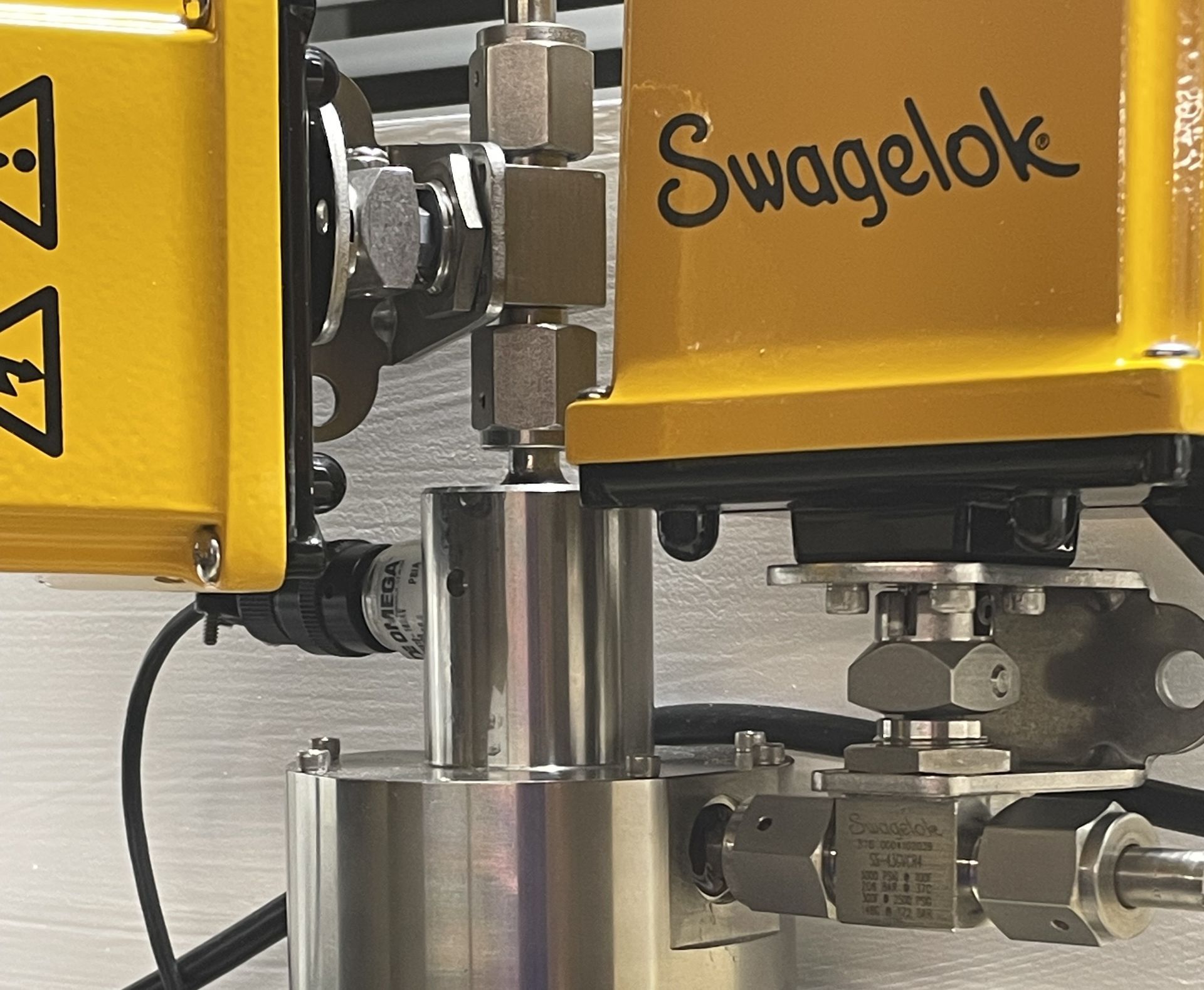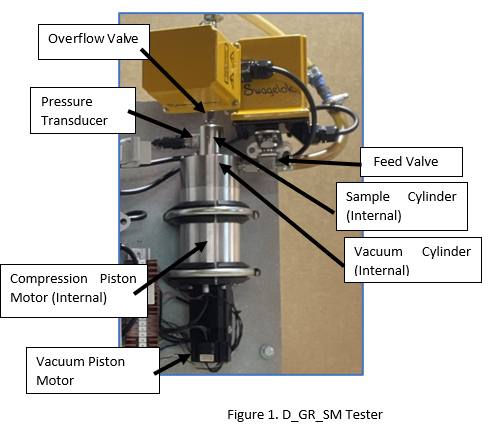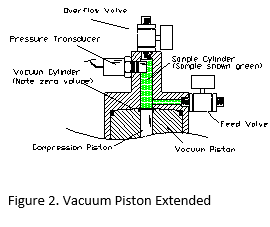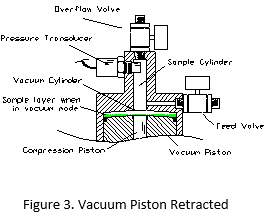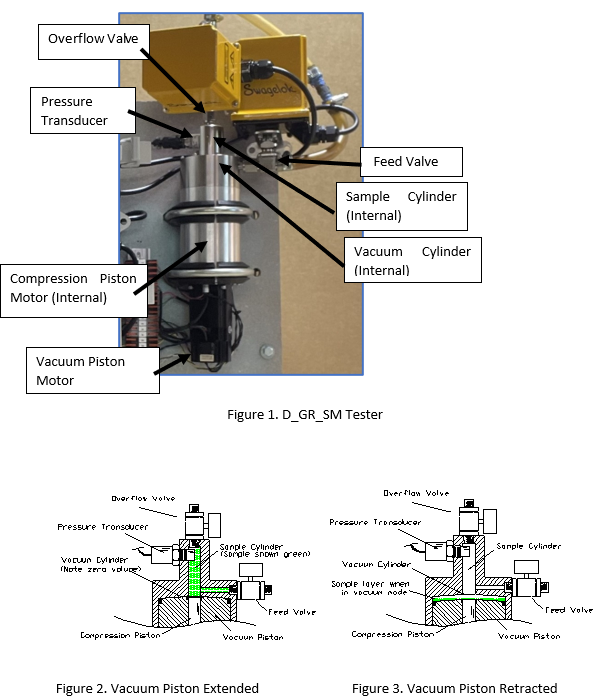D_GR_SM
Take Measuring Air to the Next Level With Our D_GR_SM Tester
Dissolved air in liquids can adversely affect equipment performance and integrity, product quality, and safety. A few examples can include reduced response time of hydraulic controls in military aircraft and space launch vehicles, formation of defects in paper sheets produced in paper-making operations, printing defects, the adverse effect of dissolved air on the carbonation of beverages, and, in all industries, the erosion of valves and fittings.
The DG_R_SM is a piston and cylinder device with unique and proprietary features that set it well above prior testing devices in this class. The patented piston and cylinder geometry of the DG_R_SM expands a liquid sample to first release dissolved air into free entrained air followed by the compression of the air-liquid mixture to determine the volume of the released air using thermodynamic gas laws. In addition to the novel mechanical design, proprietary operating procedures set the D_GR_SM well above the prior art.
The D_GR_SM also provides significant performance advantages over competing methods that rely on the measurement of bulk properties of the liquid, such as density, refractive index, conductivity, and sonic properties. Such methods are sensitive to changes in fluid properties, composition, and suspended solids content. Furthermore, such methods measure changes in the bulk liquid properties, and not in the entrained air content itself. With the entrained air calculated by the difference between two large measurements with their associated errors, the determination of low entrained air contents using bulk methods is exceedingly inaccurate.
Applications
- Hydraulic systems
- Critical control systems
- Rocket launchers
- Military aircraft
- Beverage carbonation
- Polymeric resins
- Cutting tool coolant systems
- Printing inks
- Food and pharmaceuticals
- Fine paper
- Any process or product that can be improve through the availability of dissolve air information.
DG_R_SM Specifications
How it Works
The D_GR tester is pictured in Figure 1. Figures 2 and 3 are open cross sections which illustrate the action of key internal components.
As shown in Figures 2 and 3, the tester has two axially-connected cylinders: the fixed-volume Sample Cylinder, and the variable-volume Vacuum Cylinder. The volume of the Vacuum Cylinder is controlled by the position of the Vacuum Piston. When the Vacuum Piston is fully extended, which is the position illustrated in Figure 2, the Vacuum Cylinder volume is zero. Conversely, when the Vacuum Piston is fully retracted, as shown in Figure 3, the volume of the Vacuum Cylinder is at its maximum.
Referring to Figure 2, with the Vacuum Piston fully extended and the Feed Valve and Overflow Valve opened, the liquid to be sampled flows through the Sample Cylinder. Closure of the Feed and Overflow Valves isolates a sample in the Sample Cylinder.
Referring to Figure 3, the Vacuum Piston is then retracted, thereby generating a high vacuum on the sample. The high vacuum causes the dissolved gas in the liquid to be released into the gas phase which then is dispersed as “entrained gas” in the liquid phase. The thin liquid layer with a high surface-to-volume ratio, illustrated in Figure 3, significantly increases the rate of release of dissolved gas when compared with older technology in the “piston and cylinder” class of testers. Additionally, a high-frequency low-amplitude pulsation of the Vacuum Piston further increases the release rate.
After the dissolved gas has been released, the Vacuum Piston is fractionally extended to establish a starting pressure. The Compression Piston, which has been fully contained within the Vacuum Piston, is then extended into the liquid sample in order to compress the entrained gas. The pressure change is measured with the Pressure Transducer and the volume change is determined by the distance travelled by the Compression Piston. The entrained gas content, calculated using a gas law, represents the amount of gas which was originally dissolved in the liquid.
Overview

